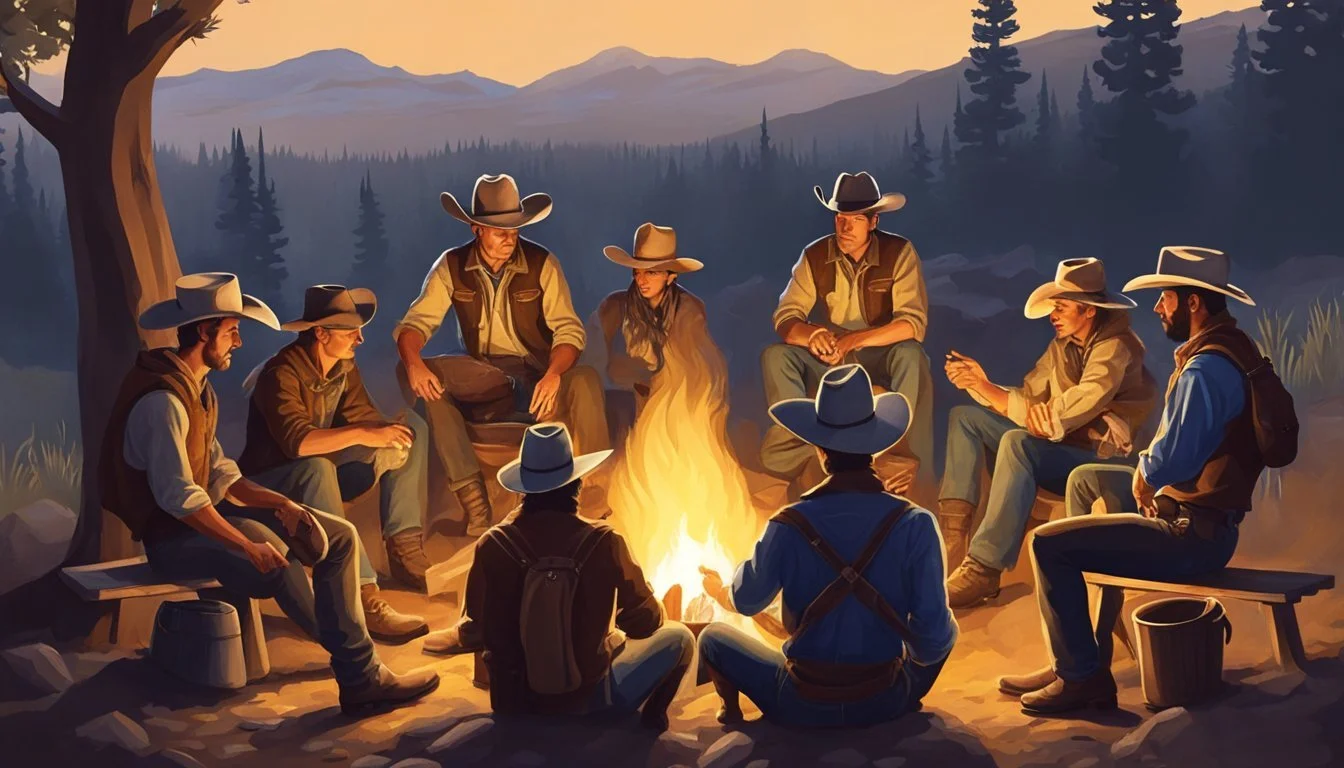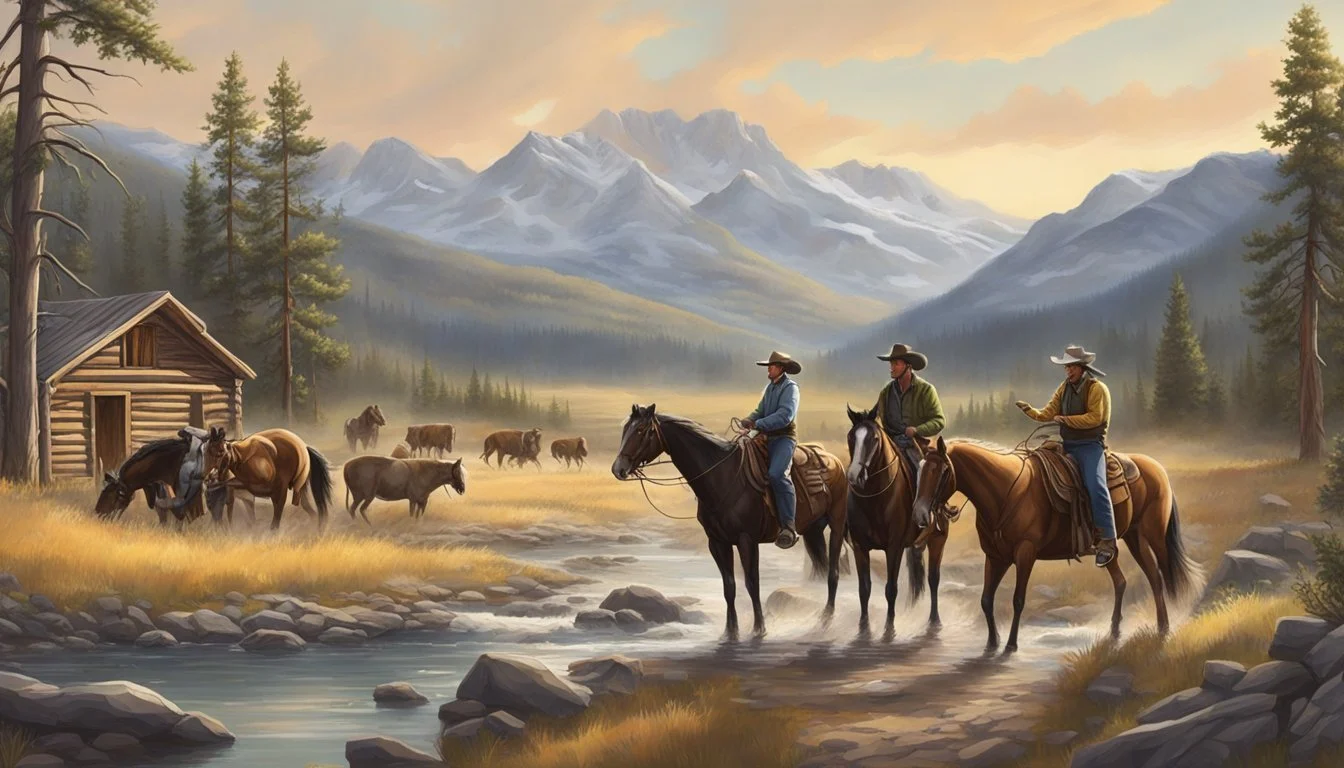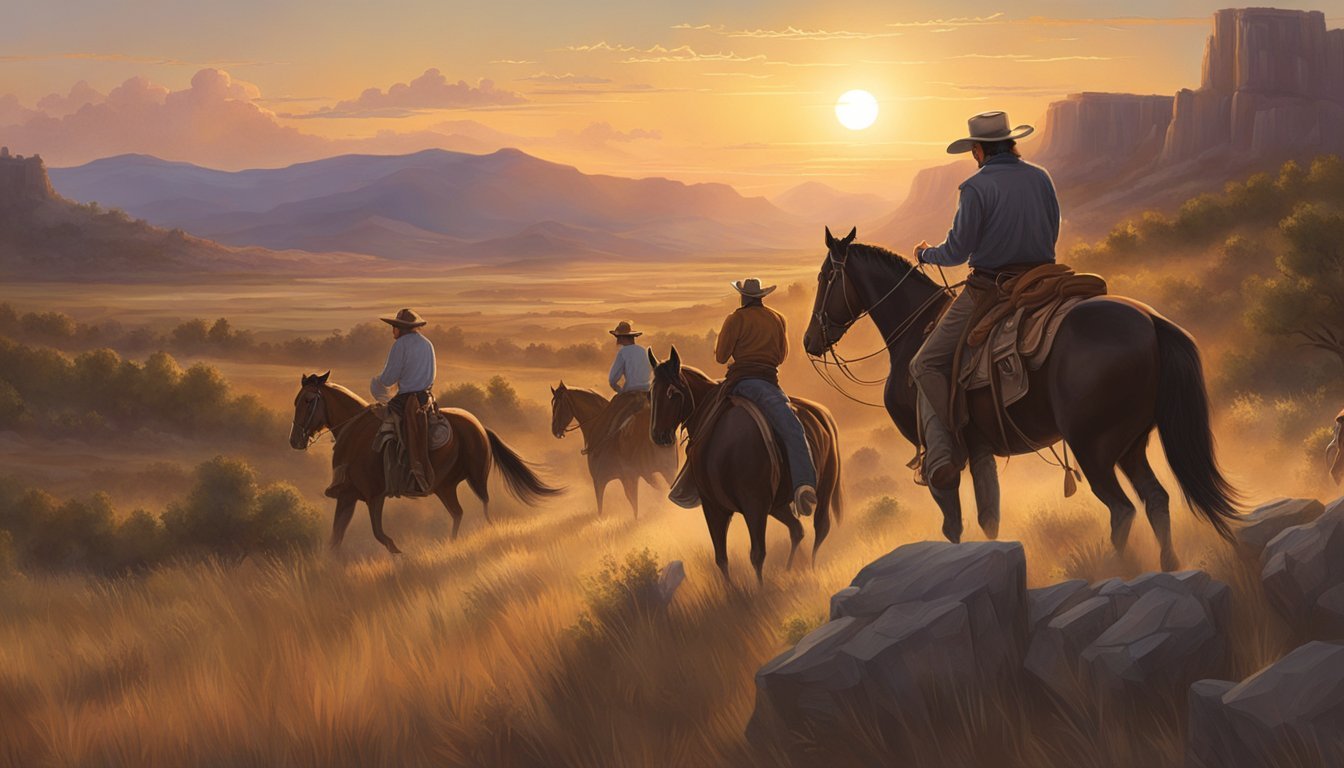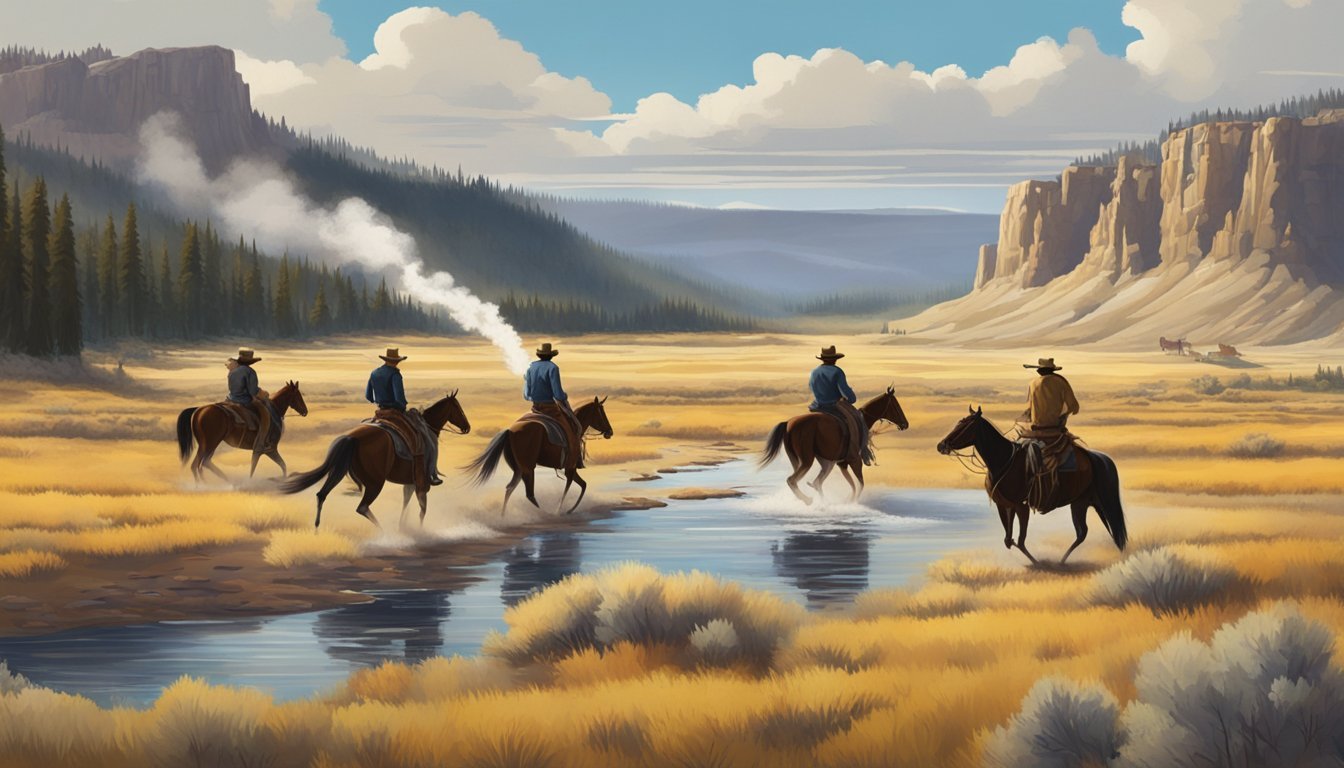Yellowstone: The Ultimate Escape from Political Chaos That Everyone's Talking About
Yellowstone, the hit television drama, has captivated audiences with its gripping storylines and stunning visuals of the American West. The show's appeal extends beyond its entertainment value, offering viewers a form of escapism during times of political uncertainty. By immersing viewers in the rugged beauty of Montana and the complex dynamics of the Dutton family, Yellowstone provides a temporary respite from real-world political tensions.
The series' success lies in its ability to blend elements of traditional Western narratives with contemporary issues. While touching on topics like land rights, Native American relations, and local politics, Yellowstone maintains a careful balance that allows viewers to engage with these themes without feeling overwhelmed by current events. This approach has resonated with a wide audience, crossing political divides and uniting viewers in their appreciation for the show's compelling characters and scenic landscapes.
As Yellowstone approaches its final season, its impact on popular culture remains significant. The show's ability to offer an escape while subtly reflecting aspects of America's political landscape has contributed to its status as a cultural phenomenon. By providing a space for viewers to momentarily disconnect from the complexities of modern life, Yellowstone has tapped into a collective desire for storytelling that is both engaging and removed from the immediate pressures of political turmoil.
The Rise of 'Yellowstone': A Cultural Phenomenon
Yellowstone has emerged as a television juggernaut, captivating audiences and reshaping the landscape of modern Western dramas. The show's meteoric rise stems from its compelling storytelling, cinematic visuals, and exploration of timely themes.
Creation and Vision by Taylor Sheridan
Taylor Sheridan, the creative force behind Yellowstone, brought a unique vision to the series. His background in acting and screenwriting informed the show's authenticity and depth. Sheridan's focus on complex characters and nuanced conflicts elevated Yellowstone beyond typical Western tropes.
The series premiered on Paramount Network in 2018, quickly gaining traction with viewers. Sheridan's commitment to filming on location in Montana added a layer of visual splendor that became integral to the show's identity.
Yellowstone's success lies in its ability to blend traditional Western elements with contemporary issues. This approach resonated with a wide audience, attracting both long-time Western fans and newcomers to the genre.
Yellowstone's Impact on Popular Culture
Yellowstone's influence extends far beyond television screens. The show has sparked renewed interest in Western fashion, with viewers emulating the characters' rugged style. Cowboy hats, boots, and denim have seen a resurgence in popularity.
Tourism to Montana has increased as fans seek to experience the breathtaking landscapes featured in the series. Local businesses have benefited from this influx of Yellowstone-inspired visitors.
The show's themes of family, power, and land rights have sparked discussions on social media and in everyday conversations. Yellowstone's ability to tap into current societal tensions while providing escapism has contributed to its cultural impact.
Merchandise sales have soared, with branded clothing and accessories becoming highly sought-after items. This commercial success further cements Yellowstone's status as a pop culture phenomenon.
Beyond the Show: Spinoffs and Expanding the Yellowstone Universe
Yellowstone's popularity has led to the creation of a broader universe. Paramount+ has launched several spinoff series, expanding the show's narrative reach.
"1883" serves as a prequel, exploring the Dutton family's 19th-century origins. This series attracted both existing fans and new viewers interested in historical dramas.
"1923" continues the Dutton saga, featuring high-profile stars and further enriching the franchise's mythos. These spinoffs demonstrate the versatility and longevity of the Yellowstone brand.
Plans for additional series and potential feature films indicate the franchise's ongoing growth. This expansion strategy keeps fans engaged and attracts new audiences to the Yellowstone universe.
Storytelling and Character Development
Yellowstone's compelling narrative weaves together complex characters, family dynamics, and high-stakes conflicts over land and power. The show's storytelling prowess draws viewers into a world of moral ambiguity and intense personal struggles.
Complex Characters and Family Dynamics
The Dutton family forms the core of Yellowstone's intricate character web. John Dutton, the patriarch, embodies strength and determination in his fight to preserve his legacy. Beth Dutton, his fierce and intelligent daughter, navigates the corporate world with cunning and ruthlessness.
Each character grapples with internal conflicts and external pressures. The show explores their motivations, flaws, and relationships in depth. This nuanced approach creates multidimensional personalities that resonate with viewers.
Family loyalties are constantly tested, creating tension and drama. Sibling rivalries, generational conflicts, and the burden of legacy all play crucial roles in shaping the Duttons' interactions.
The Dutton Family Saga
The Dutton family's history is central to Yellowstone's narrative. Flashbacks reveal the origins of their ranch and the sacrifices made to build their empire. This historical context adds depth to current conflicts and decisions.
John Dutton's leadership style and the expectations he places on his children drive much of the plot. His complex relationships with each of his offspring – Jamie, Beth, and Kayce – provide rich material for character development and storytelling.
The show explores themes of inheritance, duty, and the price of power through the Dutton family saga. Their struggles to maintain control of their land and way of life resonate with viewers facing their own challenges in a changing world.
Power Struggles and Land Ownership
Land ownership is a central conflict in Yellowstone. The Dutton ranch, spanning hundreds of thousands of acres, is constantly under threat from developers, government agencies, and rival ranchers.
The show portrays the complex web of political and economic interests vying for control of the land. John Dutton's efforts to protect his property often lead to morally ambiguous decisions and alliances.
Power dynamics shift as characters maneuver for advantage. Corporate interests, represented by Market Equities, clash with the traditional ranching lifestyle. These conflicts raise questions about progress, preservation, and the future of the American West.
Representations of Native Americans
Yellowstone incorporates Native American characters and storylines, adding depth to its exploration of land rights and cultural identity. Thomas Rainwater, chairman of the Broken Rock Reservation, emerges as a formidable opponent to the Duttons.
The show addresses historical injustices and ongoing struggles faced by Native American communities. Land rights, cultural preservation, and economic development on reservations are key themes.
Monica, Kayce Dutton's wife, bridges two worlds as a Native American married into the Dutton family. Her character provides insight into the complexities of identity and belonging in a divided landscape.
Yellowstone's portrayal of Native American characters has received both praise and criticism. The show attempts to present a nuanced view of contemporary Native American issues within its dramatic framework.
Themes and Motifs
Yellowstone weaves together multiple themes that resonate deeply with American culture and identity. The show explores complex issues surrounding land, family, and tradition against a backdrop of societal change.
Conflict and Conservation
The struggle between development and preservation forms a central conflict in Yellowstone. The Dutton family fights to maintain their vast ranch, representing a vanishing way of life. This battle extends beyond property lines to encompass environmental concerns.
John Dutton's efforts to protect his land from developers and outside interests mirror real-world tensions over resource management and conservation. The show highlights the delicate balance between economic progress and preserving natural landscapes.
Yellowstone National Park serves as both a literal and symbolic presence. It embodies the idea of protected wilderness and raises questions about human interaction with nature.
Cultural Preservation vs. Gentrification
Yellowstone tackles the clash between traditional rural lifestyles and encroaching urbanization. The series portrays ranching culture as under siege from wealthy outsiders and corporate interests.
The Dutton ranch becomes a stronghold of Montana's cowboy heritage. Characters like Rip Wheeler embody the idealized cowboy ethos - tough, loyal, and deeply connected to the land.
In contrast, the show depicts newcomers as potential threats to this established order. Real estate developers and tourists represent forces of change that could alter the region's character.
This tension reflects broader societal debates about preserving local cultures in the face of economic and demographic shifts.
The Embodiment of the Modern American West
Yellowstone presents a complex portrait of the contemporary Western United States. The show blends traditional cowboy imagery with modern realities of politics, business, and technology.
Characters navigate a world where smartphones coexist with cattle drives. This juxtaposition highlights the evolving nature of Western identity in the 21st century.
The series explores how Native American communities fit into this changing landscape. Interactions between the Duttons and local tribes add depth to discussions of land rights and cultural heritage.
Yellowstone's depiction of the West acknowledges its mythic status while grounding it in present-day challenges.
Freedom, Legacy, and the American Dream
At its core, Yellowstone examines different interpretations of the American Dream. For the Duttons, this dream centers on maintaining their family legacy and way of life.
The show explores the concept of freedom through characters' choices and sacrifices. John Dutton's children grapple with the weight of their inheritance and the price of independence.
Legacy becomes a driving force, influencing decisions and shaping relationships. The desire to leave a lasting mark on the land ties into broader themes of identity and belonging.
Yellowstone presents a nuanced view of success, questioning whether the pursuit of wealth and power aligns with traditional values of family and community.
Sociopolitical Commentary
Yellowstone's narrative weaves a complex tapestry of political and social issues reflective of modern America. The show's portrayal of power dynamics, cultural tensions, and rural identity resonates deeply with viewers across the political spectrum.
Reflection of Contemporary Political Discourse
Yellowstone mirrors many hot-button issues in current U.S. politics. Land rights and environmental concerns take center stage, highlighting conflicts between ranchers, developers, and conservationists. The series explores corruption at various levels of government, from local officials to state representatives.
The Dutton family's struggles often parallel conservative talking points about preserving traditional ways of life. This resonates with viewers who feel their values are under threat in a rapidly changing society.
The show doesn't shy away from addressing racial tensions, particularly through its portrayal of Native American characters and their interactions with white ranchers.
Rural America and its Place in National Identity
Yellowstone showcases the cultural divide between urban and rural America. The series presents a romanticized view of cowboy culture while acknowledging its challenges in the modern world.
The Dutton ranch symbolizes a disappearing way of life, evoking nostalgia and pride in rural American identity. This portrayal speaks to viewers who feel overlooked or misunderstood by mainstream media and coastal elites.
The show explores the economic pressures facing rural communities, including land development, tourism, and changing agricultural practices. These themes resonate with real-world debates about the future of rural America.
Addressing Cultural and Political Tensions
Yellowstone tackles sensitive topics like tribal sovereignty and Native American rights. The series portrays complex relationships between the Dutton family and the neighboring reservation, highlighting historical injustices and ongoing conflicts.
The show explores white grievance through characters who feel threatened by changing demographics and social norms. This aspect of the narrative reflects real-world anxieties among some rural white Americans.
Yellowstone doesn't explicitly align with any political party, instead presenting a nuanced view of how national politics impact local communities. This approach allows viewers from different political backgrounds to find relatable elements in the story.
Visuals, Music, and Production
Yellowstone's visual style, musical choices, and production quality contribute significantly to its appeal. These elements work together to create an immersive neo-Western experience that transports viewers to the rugged Montana landscape.
The Aesthetics of the Neo-Western Genre
Yellowstone's visual aesthetic blends classic Western imagery with modern sensibilities. Wide shots of expansive landscapes showcase Montana's breathtaking scenery, evoking a sense of freedom and adventure. The show's cinematography captures the harsh beauty of the American West, from snow-capped mountains to golden prairies.
Muted color palettes and natural lighting enhance the authentic feel. Scenes often feature warm, earthy tones that reflect the ranch setting. This visual approach helps ground the series in reality while maintaining a cinematic quality.
The show's music reinforces its neo-Western identity. A mix of country, rock, and folk tracks accompanies key moments, enhancing emotional impact and setting the mood for various scenes.
High Production Values and Prestigious Branding
Yellowstone boasts high production values typical of prestige TV. The series' reported budget of $5-7 million per episode allows for top-tier talent, stunning locations, and high-quality technical elements.
Paramount Network's investment in the show is evident in its polished look and feel. Expertly choreographed action sequences and attention to detail in set design contribute to the show's premium brand.
The casting of Hollywood veteran Kevin Costner as the lead adds star power and credibility. His presence, along with other talented cast members, elevates the series' prestige factor.
Costume and Fashion Trends Emanating from the Show
Yellowstone's costume design has sparked fashion trends beyond the screen. The show's wardrobe blends practical ranch wear with stylish Western-inspired pieces, creating a distinctive look.
Characters' outfits feature a mix of authentic cowboy attire and modern interpretations. Iconic items include weathered leather jackets, wide-brimmed hats, and ornate belt buckles.
The "Yellowstone effect" has influenced real-world fashion, with viewers seeking to emulate the characters' rugged yet refined style. Retailers have reported increased demand for Western-wear items, from cowboy boots to denim shirts.
This sartorial impact extends beyond casual wear, inspiring high-end designers to incorporate Western elements into their collections.
Legacy and Impact
Yellowstone has left an indelible mark on American television and popular culture. The show's unique blend of Western aesthetics, family drama, and political intrigue has resonated deeply with audiences, creating a lasting impact beyond the screen.
Shaping a Path for Future Television Drama
Yellowstone's success has paved the way for a new wave of television dramas. Its gritty realism and complex characters have raised the bar for storytelling in the medium. The show's ability to tackle contemporary issues within a traditional Western setting has inspired other series to explore similar themes.
Many new productions now aim to capture the essence of Yellowstone's appeal. This includes a focus on regional American stories, multi-generational family sagas, and conflicts over land and resources. The series has also revitalized interest in the Western genre, leading to increased demand for similar content.
Yellowstone's influence extends to production techniques as well. Its cinematic visuals and on-location filming have set new standards for television cinematography.
The Dutton Ranch: Becoming an Icon of American Television
The Dutton Ranch has become a symbol of modern American television. Its sprawling landscapes and rustic buildings are instantly recognizable to millions of viewers. The ranch represents more than just a setting; it embodies the show's themes of legacy, power, and the struggle to preserve a way of life.
Merchandise featuring the Dutton Ranch logo has become popular among fans. The ranch's iconic "Y" brand has appeared on clothing, accessories, and home decor items. This merchandising success demonstrates the strong connection viewers feel to the fictional property.
The ranch has also sparked discussions about land ownership and conservation in the American West. Its portrayal has brought attention to real-world issues facing ranchers and rural communities.
Influence on Tourism and Local Economy in Montana
Yellowstone's popularity has significantly boosted tourism in Montana. Fans of the show flock to the state to experience the landscapes and lifestyle depicted on screen. This influx of visitors has had a substantial economic impact on local communities.
Several tour companies now offer "Yellowstone-inspired" experiences. These include horseback riding, ranch stays, and visits to filming locations. Local businesses have capitalized on the show's success by offering themed products and services.
The increased tourism has created jobs and stimulated economic growth in rural areas. Hotels, restaurants, and shops near filming locations have reported higher revenues. However, this boom has also raised concerns about preserving Montana's natural beauty and traditional way of life.
Critical Reception and Analysis
Yellowstone has garnered widespread attention from critics, audiences, and scholars alike. Its portrayal of rural America and complex characters has sparked discussions on representation and cultural impact.
Expert Opinions and Scholarly Perspectives
Critics have praised Yellowstone for its cinematic quality and compelling storytelling. The show's exploration of power dynamics and land conflicts has drawn scholarly interest. Some experts view it as a reflection of contemporary tensions in rural America.
Tressie McMillan Cottom, a sociologist, has analyzed Yellowstone's depiction of class and race. She notes the show's nuanced portrayal of socioeconomic struggles in Montana.
Critics have also highlighted the strong performances, particularly Kevin Costner's portrayal of John Dutton. The series' authentic representation of ranch life and Western landscapes has received acclaim.
Audience Reception and Fandom
Yellowstone has cultivated a passionate fanbase, becoming a cultural phenomenon. Viewers connect with the show's themes of family loyalty and tradition.
The series has resonated strongly with rural audiences who appreciate its authentic portrayal of their lifestyle. Urban viewers are drawn to the escapism offered by the rugged Montana setting.
Fan communities have formed online, discussing plot theories and character arcs. Merchandise sales and tourism to filming locations have surged, indicating the show's impact beyond the screen.
Representation and Diversity in Casting
Yellowstone's casting choices have sparked conversations about representation in television. The show features Native American actors in prominent roles, bringing attention to indigenous issues.
Kelly Reilly's portrayal of Beth Dutton has been praised for its complexity and strength. Her character challenges traditional gender roles in the Western genre.
Critics have noted the limited racial diversity among the main cast. Some argue this reflects the demographics of rural Montana, while others call for more inclusive representation.
The show's depiction of Native American characters has received mixed reviews, with some praising its nuance and others critiquing stereotypical elements.








